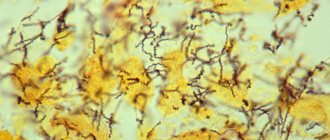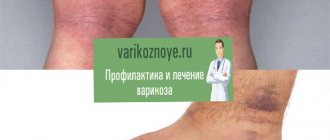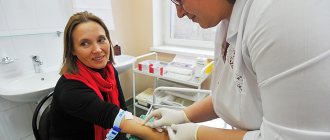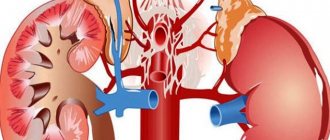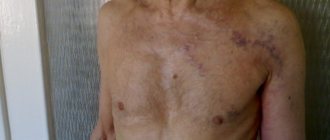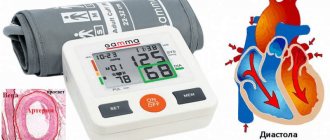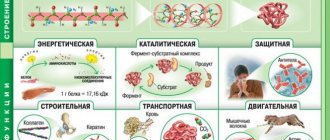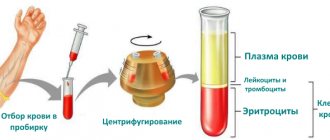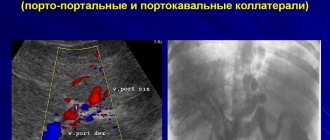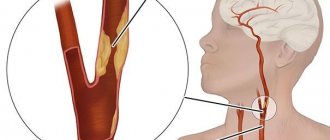If you experience the first pain in the legs and bulging veins, you should immediately consult a doctor and undergo a comprehensive examination, since this is not only a cosmetic defect, but also a dangerous pathology. That is why, as you age, you need to especially carefully monitor the health of your legs and monitor absolutely any vascular disorders.
If a vein has popped out in your leg, the reasons for this can be very different, but it is important to promptly pay attention to the presence of a problem. The reason for this may lie in dangerous disorders of the vascular system.
For what reason do veins pop out on the legs?
Today, an increasing number of people are susceptible to a variety of vascular diseases. The pathological condition can occur for a variety of reasons, in particular such as:
- poor nutrition;
- stress;
- genetic predisposition.
At the initial stage, the disease manifests itself in the form of spider veins and bulging veins in the legs. In addition, a person may experience some soreness and burning. Often, after an examination, varicose veins are diagnosed, but there may also be other disorders and pathologies. Protruding veins in the legs may be a sign of pathological conditions such as:
- varicose veins;
- thrombosis;
- thrombophlebitis;
- postphlebitic syndrome.
This occurs as a result of poor circulation in the extremities, and therefore requires observation by a phlebologist. If a person ignores the problem for a long time, this can lead to the formation of ulcers.
What if pulsation is left untreated?
Under no circumstances should you ignore the condition when the veins in your temples are swollen. After all, this may indicate the presence of serious diseases. Timely identification of causes and treatment will help avoid adverse health consequences. Let's look at what neglect can lead to when the veins in the temples swell:
- significant deterioration in the functioning of the organs of vision and hearing;
- violation of psychological balance;
- serious illnesses: strokes and heart attacks;
- depressive states, increased aggression, unreasonable anxiety, tearfulness.
Important! There are known cases where the lack of proper attention to the fact that the veins in the temples were swollen led to death.
Phlebeurysm
Protruding leg veins can be a major sign of varicose veins. In this case, there is stagnation of blood in the veins, they gradually swell, and their walls lose elasticity. These pathological processes are very dangerous because there is a possibility of blood clots. There are certain groups of people susceptible to varicose veins, namely:
- people leading a sedentary lifestyle;
- people with hormonal disorders;
- athletes;
- having a hereditary predisposition.
Varicose veins on the legs cause a lot of inconvenience, as a certain pain occurs. In addition, the disease has quite characteristic signs, in particular, such as:
- tired legs after walking;
- swelling of the feet;
- swollen veins and soreness;
- change in skin color and itching;
- formation of trophic ulcers.
Many people note the occurrence of an unpleasant pulling sensation under the knee, which may indicate the presence of a blood clot.
Diagnostic measures
To establish the true reason why the veins in the temples are swollen, you will need to undergo several examinations. Namely:
- Collection of primary anamnesis. During the interview, the patient must tell the doctor all the details: pain in the temple on the left or right, whether it is pulsating or not, when the alarming symptoms first appeared, whether pain is present.
- Laboratory studies of biological fluids. Particular attention is paid to the platelet count.
- Ultrasound of the blood vessels supplying the upper body. Necessary for assessing blood circulation.
- MRI and CT of the head region. Research will reveal the presence of neoplasms.
- Analysis of selected vascular tissue cells.
Thrombophlebitis
Thrombophlebitis is characterized by an inflammatory process in the veins, as well as the formation of blood clots in the lumen of blood vessels. This disease occurs quite often, as a result the patient experiences pain and burning along the vein. In addition, there is a painful compaction that can be felt upon palpation. Often the lower extremities become very swollen and painful during this disease.
If the first signs of varicose veins occur, you should definitely consult a doctor for examination and subsequent treatment.
What do prominent veins on the forehead and headache mean?
As a result of any stress experienced, a person’s blood pressure rises, which is why the veins on the forehead protrude. If such a condition is accompanied by a headache, this means that intracranial pressure has also increased. The vessels simply cannot provide the body with nutrients and oxygen.
Headache is a sign of vascular disease. You don't need to tolerate it. It is best to try not only to eliminate the headache itself, but also to undergo a full examination by specialists and begin treatment of the circulatory system.
The causes of severe pain in the head may be the following: vascular dystonia, disease of the thyroid gland, kidneys, heart, arterial hypertension.
Overwork and a person’s emotional state also have a huge impact.
If your veins become pulsating and you feel a sharp pain in your temples, you should definitely stay in bed and take medicine, having first measured your blood pressure (most likely, it will be elevated). If you do not want to risk your health, it is better to call an ambulance and conduct a diagnosis to accurately identify the disease.
Some people often have problems with visible veins, including prominent veins on the forehead. This happens due to the reduction of collagen, the skin ages, so you can often see protruding veins in older people. Unfortunately, this process is not reversible; you can only get rid of it using the latest cosmetic techniques. And, alas, only surgery under local anesthesia can help you. The bulging vein is removed using two incisions.
Postphlebitic syndrome
Dilated veins in the legs can also occur due to postphlebitic syndrome. This pathological process is typical for patients who have previously suffered thrombosis. The characteristic features of the disease are considered to be a violation of the outflow of venous blood. As a result, significant circulatory disorders and functional changes in soft tissues in the extremities occur. The main symptoms of the disease are:
- constant bursting pain in the affected area;
- heaviness in the legs and slight lameness;
- excessive pigmentation of the skin;
- dilated veins in the legs.
Gradually, weeping eczema may form on the surface of the skin, as well as trophic ulcers localized on the inner surface of the lower leg.
Veins of the head and neck: head anatomy, functions and structure of veins
The human head and neck are vital organs. Pathologies of various types can lead to irreversible consequences.
Anatomy of the head and neck
The head is presented as:
- The base of the skull, consisting of the frontal, temporal, zygomatic, maxillary and mandibular lobes. The parietal and occipital bones are also distinguished.
- The muscle layer covering the skeleton is presented in the form of striated tissue. They help fix the head and extend into the cervical region.
- Nerve endings line the head both on top of the muscle layer and inside the cranial vault.
- The facial part is “overloaded” with facial muscles that allow you to express emotions.
The cranial cavity contains the brain, without which normal human existence is impossible.
For its development and functioning, a constant supply of nutrients and oxygen is necessary. This can be provided by the circulatory system.
The neck is the part of the human body that connects the head to the body. It contains many structures that contribute to the development of the human brain and head as a whole.
The structure of the neck includes bone bases - vertebrae, a layer of striated muscles, and nerve endings. Circulatory and lymphatic system. The presented description is deeply superficial, because both the head and neck have a complex anatomical structure.
Functions of the veins of the head and neck
The main functions of the large blood circulation as a whole:
- removal of hormones;
- maintaining the tone of organs and systems;
- filling and deposition of blood;
- removal of breakdown products during metabolism;
- maintaining the reflexogenic zone;
- regulation of the circulatory process when blood pressure decreases due to heavy blood loss;
- transportation of hemomicrocirculatory bed to the heart muscle.
The blood supply to the cervical and head regions is carried out by arterial and venous vessels.
The presence of valves in the lumen of the vessel prevents blood from flowing back.
Perform specific functions including:
- supplying nutrients to the brain and other tissues of the head;
- delivery of blood from the heart and back;
- collection of carbon dioxide.
The composition of venous blood is represented by a gas mixture - carbon dioxide molecules. As well as waste products of formed elements - glucose, albumin.
Structure and features of work
The distribution of superficial and deep vessels is represented by a large number. They provide high reliability of uninterrupted power supply to the tissues of the skull. The superficial ones include:
- upper outlet;
- inferior outlet;
- superficial average;
- superior anastomotic;
- lower anastomotic.
The deep cerebral veins are represented by a large list. They are divided into upper and lower.
The main task of deep venous vessels is to collect blood. Flowing from the basal ganglia, vascular plexuses and diencephalon.
The upper group includes the following veins:
- Lateral ventricle;
- internal brain;
- superior thalamostriatal.
Representatives of the lower group:
- Paired basal, formed from the vessels of the medulla oblongata, pons;
- large brain
Other types:
- Cerebellar;
- sinuses of the dura mater;
- superior inferior and sagittal sinus;
- straight, transverse, occipital sinus;
- sigmoid and sinus drainage.
The veins of the neck are divided into vessels of the anterior and posterior sections. The vascular network of the upper body has some differences with the base of the body. Since the arterial branches are not duplicated with the venous branches and are located completely differently.
Internal jugular vein
Refers to the anterior cervical region, like the outer one. Anatomically located in the jugular foramen and occupies most of the space.
It is the largest main vessel of the cervical spine.
IJVs are presented in the form of slit-like channels, placed in a connective tissue membrane of increased density.
The lumen of the vessel is constantly open, due to which the outflow of blood occurs continuously, preventing stagnation.
At the levels of the larynx, the PU of the internal section comes into contact with the carotid artery on both sides. The outflow of blood is carried out through the sinus system. From the left and right sides, the collected blood enters the superior vena cava.
The upper section is equipped with valves. Here there is a merger with the subclavian vascular system. The IJV is divided into intracranial and external cranial branches.
Ducts of the IJV:
- snail plumbing;
- pharyngeal;
- meningeal;
- lingual;
- superior thyroid;
- middle thyroid;
- sternocleidomastoid.
Diploic veins of the brain
Located in the diploic substance of the cranial bones, they are represented by a developed canal system. There are no valves in the lumens of the vessels, since the outflow of blood occurs from the bones of the skull.
Inside the cranium, they communicate with the meningeal and sinuses of the meninges. The outside is covered with emissary veins.
The group includes the following representatives of the venous system:
- Frontal diplodic;
- Anterior temporal diploic;
- Posterior temporal;
- Occipital.
Diploic veins of the brain are their own cerebral veins. They lie deep in the canals of the bone, originating from the spongy substance.
Emissary veins
The main function is to connect the venous vessels of the skin with deeply located vessels.
To perform its task, the emissary system passes through a series of cranial foramina. According to their localization, there is a classification:
- Occipital;
- mastoid;
- parietal;
- condylar.
The name corresponds to the location of the bones. The emissary veins are designated in the diagram as vessels of the systemic circulation of the head vault.
Superior and inferior ophthalmic veins
Due to the branched network, they connect with the facial, frontal and paranasal veins. As in previous cases, an inextricable connection is formed with the sinuses of the dura mater.
The vessels do not have a valve apparatus and therefore the blood flow can vary from facial to cavernous sinusitis. Due to this structure of the orbit, the upper and lower eyelids are susceptible to inflammatory processes.
Vein diseases of the head and neck
The main disease is a violation or difficulty in the outflow of venous blood. Pathology develops for a number of reasons:
- Tumors compressing blood vessels;
- skull injuries of various types;
- hypertension in combination with arrhythmia;
- violations of the venous supply system;
- alcohol intoxication.
Venous stagnation brings many problems and manifests itself in the form of the following symptoms:
- noise in ears;
- headache, worse after exercise;
- muscle weakness;
- poor memory;
- swelling and cyanosis of the skin;
- dizziness to the point of fainting.
Osteochondrosis is the main cause of blood stagnation and difficulty in its outflow in the lumen of the venous vessels.
The disease must be treated on time. Since congestion leads to ischemia of brain tissue or the entire organ.
Features and structure of the superficial vein system
The structure of the system of superficial vessels is presented in the form of several groups:
- Drainage of blood from the cerebral cortex. More precisely, the upper and lower superficial veins originate from the white matter of the hemisphere;
- The superficial mesencephalon collects biological fluid from the telencephalon.
As a result of anastomosis, a venous network is formed on the surface of the skull. Collateral blood flow is possible in any direction.
The superior anastomotic vein plays a special role. It connects the superior sagittal, cavernous and parietal sinuses with the temporal sinuses.
The lower anastomotic connects the transverse venous sinus with the cavernous or sphenoparietal sinus. And also temporal and parietal with occipital.
Other veins located in the head and neck
A huge number of vessels are present in the muscle and bone layers of the brain. The name of which refers to the organs adjacent to them. In order to know all the names and functions, you must carefully study anatomy textbooks.
Large classification of veins and their functions
Eyes and sockets:
- Top, bottom, central;
- vorticose;
- episcleral.
Functions: outflow of blood from the contents of the orbits into the inferior ophthalmic vein.
Face:
- The postmandibular and its tributaries - the parotid, anterior auricular, temporomandibular;
- Palatine external;
- Submental;
- Deep facial;
- Superior inferior labial;
- Lower and upper eyelids;
- External nasal.
Veins play a huge role in the human body. Each vein has its own name and performs a specific function.
If a person has diseases that are associated with venous problems. It is necessary to begin their treatment immediately. Otherwise, irreversible consequences are possible.
: Location of veins of the head and neck
Source: https://venaprof.ru/veny-golovy-i-shei/
Thrombosis
The formation of large blood clots inside the vessels interferes with the normal movement of blood. Such blood clots are often diagnosed in paralyzed people who are bedridden for a long time. The main signs of the disease may be:
- unpleasant painful sensations in the legs;
- severe swelling;
- increased temperature in the area of the affected limb;
- expansion of saphenous veins;
- painful sensations when walking.
It is worth considering that this disease can be practically asymptomatic. Thrombosis is very dangerous because, in the absence of timely treatment, a clot can break off and penetrate the pulmonary artery with the blood flow, closing its lumen. This can lead to very dangerous consequences.
What to do if veins pop out on your legs?
Protrusion of veins may indicate the presence of very serious pathologies in the body. Many people wonder what to do if veins pop out in the legs, as this condition can be very dangerous for a person. If small lumps appear, you should definitely visit a doctor for diagnosis and subsequent treatment. Every day your health can only worsen and over time, one stage of the pathological process gradually flows into another. That is why you should not hesitate - you need to start timely treatment.
If the veins in the legs protrude, what should you do, how can you help the patient? There are several ways to correct this condition. All applied methods are divided into:
- conservative;
- minimally invasive;
- surgical.
In addition, in some cases, traditional methods are used. However, this is only possible after consulting a doctor, as self-medication can be very dangerous.
Violation of venous outflow
One of the most dangerous reasons why swollen veins appear on the temple is a violation of venous outflow. The fact is that with the normal functioning of blood vessels, blood must not only be delivered to all cells of the body in a timely manner, but also flow back in a timely manner. If this process is disrupted, the reasons may be as follows:
- a tumor appeared in the head region;
- the person severely injured the skull;
- suffered a stroke;
- frequent jumps in blood pressure;
- addiction to smoking and alcohol-containing drinks;
- the presence of pathologies of the cardiovascular system;
- excessive motor and mental stress;
- prolonged crying in children;
- an unnaturally long absence of breathing, for example, when diving.
Violation of venous outflow is a fairly serious condition that requires immediate treatment. It is especially dangerous if, in addition to the appearance of a pulsating vein on the temple, the following symptoms appear:
- severe headache;
- the vein is greatly swollen and has acquired a bright blue or purple color;
- nauseating feeling, vomiting;
- muscle weakness of the limbs, it is difficult for a person to move.
The cause of these symptoms may be ischemic disease. Also, against the background of improper blood flow, blood clots can form, which sometimes lead to the death of the patient.
In addition to those discussed, there are completely natural, non-dangerous reasons for the veins in the temples to swell and pulsation to appear. For example:
- carrying heavy objects;
- intense sports training;
- psycho-emotional stress;
- long stay in a stuffy room.
If the veins are swollen under the influence of these factors, after some time they will return to normal on their own.
Conservative treatment method
If veins pop out in the legs, what to do and how to alleviate the patient’s condition? These and many other questions worry the patient. In the presence of such a disorder, competent therapy is required. In the absence of pronounced signs, the patient is recommended conservative therapy.
Medications help eliminate discomfort, and when treating varicose veins, medications help thin the blood. Thanks to this, blood moves through the vessels much more easily. The most popular medications include:
- "Phlebodia";
- "Detralex";
- "Venarus";
- "Troxenvazin."
All of these medications must be taken over a long period of time. In addition, ointment for leg veins can be used as a complementary therapy. The following medications are often prescribed:
- "Lioton";
- "Troxevasin";
- "Venolife".
Ointment for leg veins should only be selected by a qualified doctor so that the product used has a comprehensive effect on the affected area. The following may be prescribed as additional therapy:
- "Ascorutin";
- "Courantil";
- "Aspirin".
These medications help improve blood circulation in the veins and blood vessels. Drug treatment is prescribed at the initial stages of the disease, since deeper damage requires other methods of treatment.
Drug treatment
Various methods are used to improve the patient's condition. These include traditional methods of treatment, physiotherapy, exercise therapy, massage, acupuncture. However, the most common treatment for swollen veins in the temples is drug therapy. Most often, in such cases, specialists prescribe the following groups of medications:
- Glucocorticoids. The most effective remedy is Prednisolone. The treatment is quite long and can last for several years until the bloating of the veins is completely eliminated. However, the dose is gradually reduced.
- To exclude thrombosis, in order to increase the lumen of blood vessels, vasodilators are used. For example, Mexidol, Betaserc, Actovegin.
- Blood thinners. The most effective are Aspirin Cardio, Warfarin, Cardiomagnyl.
- Vitamins to strengthen blood vessels. The best complexes: Ascorutin, Vitrum Cardio, Antiox Plus.
Important! Patients are strictly prohibited from self-prescribing medications. Such actions may lead to side effects.
In order to avoid adverse consequences when the veins in the temples are swollen, you must immediately visit a health care facility. Even if the causes of pulsation do not pose a danger, it is better to play it safe and consult a specialist.
Minimally invasive intervention
If veins pop out on your legs, what should you do? This question is asked by every patient suffering from such a disorder. Quite popular methods of therapy are sclerotherapy and laser treatment. These techniques are used mainly if the protrusion of the veins is not very noticeable.
During sclerotherapy, a certain substance is injected into the affected vein, which promotes the degeneration of the affected area into connective tissue. Thus, when using this technique, the dilation of the veins disappears.
Laser therapy involves treating the affected vein through the skin. The patient feels virtually no pain and can quickly return to normal life immediately after the procedure.
Prevention measures
The condition where the veins in the temples are swollen can be completely avoided. To do this, you need to perform simple preventive actions:
- Get enough rest, don’t get hung up on work and perform feats of labor.
- Sleep at least eight and no more than nine hours at night. Before going to bed, you need to ventilate the bedroom well.
- Adjust your diet and choose the right diet. It is better to give up too fatty, fried, spicy foods, and sweets. Pickles and preservatives have a particularly negative effect on the activity of blood vessels. You will need to include seasonal fruits and vegetables, lean meat, fresh dairy products, nuts, dried fruits, and legumes in your menu.
- Give your body as much physical activity as you can, but don’t overdo it. For example, daily walks of twenty to forty minutes will be beneficial.
- Refuse or at least minimize the consumption of alcoholic beverages, tobacco smoking, including hookah smoking.
- Try to reduce the amount of psycho-emotional stress - enter into conflicts and arguments less, and do not take everything with hostility.
- Ensure adequate drinking regime. An adult needs at least two liters of clean water per day.
Surgical intervention
If the vessels are very badly affected, then surgery on the veins of the legs may be required. This method helps eliminate existing pathology. However, surgical intervention does not fully guarantee that varicose veins will not appear again after some time. Doctors use a variety of techniques to remove affected vessels. The operation is performed under local anesthesia, and if there are serious violations, then under general anesthesia. After the operation, it is necessary to wear compression garments and take certain medications.
Traditional treatment methods
Traditional treatment of leg veins can give good results, as unconventional methods help eliminate pain and fatigue. The most commonly used treatments are:
- alcohol compresses from horse chestnut;
- decoctions of nettle, calendula, chamomile;
- Apple vinegar.
However, before using traditional methods of therapy, you need to consult with your doctor.
New life is the key to excellent prevention
Any disease is easier to treat if it is started at an early stage. At the first clinical manifestations, you need to consult a doctor, undergo diagnostic tests and a course of treatment. Before the veins in the legs pop out, patients may experience symptoms of the disease.
Among the most striking are the following:
- feeling of discomfort;
- burning;
- fatigue;
- heaviness;
- pain;
- night cramps.
Doctors have compiled a list of recommendations, following which you can not only get rid of the disease at the initial stage of its development, but also take preventive measures to prevent varicose veins:
Balanced, nutritious meals at scheduled times. In many cases, the viscosity of the blood and loss of elasticity of the walls of blood vessels are caused by the wrong food: fatty, salty or smoked. Doctors recommend eating lean fish, meat, and fresh herbs. Increase the amount of raw or steamed vegetables
The following products stimulate the work of the veins of the lower extremities well: blueberries, lemon, sea buckthorn, figs. It is extremely important to exclude sweet and starchy foods from your diet. Dried fruits can be consumed in limited quantities to be tasty. If a vein pops out in your leg or symptoms of fatigue appear, you need to stop wearing heels.
Latest information: Varicocele and testosterone
For many women, wearing tight shoes that compress the foot causes the disease. Shoes should be comfortable, the heel should not exceed 5-6 centimeters. Problems with blood vessels may occur due to wearing tight pants. They compress the pelvic organs, disrupting blood flow in the lower extremities. For people who are susceptible to the disease or have a genetic predisposition, wearing jeans or dresses that tightly compress the waist is contraindicated. When sitting in a chair or on a chair, you must avoid a pose where one leg is placed on top of the other. In this case, a vein in one of the limbs is compressed, which also has a detrimental effect on the blood vessels. People who have at least once encountered clinical manifestations of varicose veins are contraindicated from steaming in saunas or taking hot baths. Ideal weight. For your height and age, you need to calculate the ideal weight to reduce the load on your lower limbs.
When starting the fight against the first symptoms of the disease, do not forget about a healthy lifestyle and activity. Doctors recommend moving more, walking or cycling, and visiting the pool. This cardio exercise improves heart function and strengthens the walls of blood vessels throughout the body.
When resting in the evening, at night, you should always put your feet on a small hill. This will drain the blood and give your legs proper rest.
By following these simple recommendations, many manage to get rid of the disease at its first signs or protect their blood vessels if they have a genetic predisposition.
https://youtube.com/watch?v=VuMiHOPa9Xw
What to do if veins pop out in your legs during pregnancy?
Veins in the legs often pop out during pregnancy. What to do and how to cope with this during pregnancy? It is very important for pregnant women to know about this, since during this period many means and methods of treatment are prohibited. Pregnant women are recommended to wear compression garments, as they help stop the development of the disease without harm to the baby.
In the second trimester of pregnancy, it is allowed to take certain medications, in particular such as:
- "Venoruton";
- "Troxevasin";
- "Glivenol";
- "Detralex."
These drugs help to increase vascular tone, which leads to their subsequent narrowing. It is best to carry out complex therapy, as this will achieve the most positive results.
What to do if a vein in your temples is swollen?
If a change in the condition of the venous vessels is a consequence of an external influence, to eliminate the cosmetic defect it is enough to neutralize the irritating factor. When a pathological condition develops against the background of temporal arteritis or impaired venous outflow, then complex therapy is used, which consists of the following groups of drugs:
This expansion of blood vessels is normalized with glucocorticoids, angioprotectors, and vitamins.
- Glucocorticoids. They reduce negative symptoms and are used over a long period of time. A drug such as Prednisolone is widely used.
- Vasodilator medications. Necessary for improving blood circulation and vascular functionality. They use "Agapurin" and "Dibazol".
- Preparations for stabilizing blood consistency. During the treatment period, the condition of the circulatory system is monitored. If necessary, blood thinners are prescribed, namely Aspirin.
- Angioprotectors. Used to prevent the formation of blood clots and venous disorders. These include “Ascorutin” and “Gepatrombin”.
- Vitamin complexes. Necessary for normalizing vascular tone. Products that contain nicotinic acid, vitamin E, C and K are used.
If the root cause of the dysfunction of blood vessels, which leads to swelling of the veins, is considered to be an infectious lesion, then antiviral and antibacterial drugs are used. Nutrition and drinking regime are also corrected. In severe cases, surgical intervention is used in the form of bypass surgery and angioprosthetics, which is used in the development of oncology and thrombosis.

